Coastal dunes, generation of wind sand
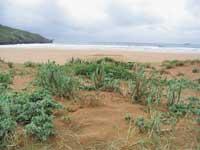
The wind drags the sand from the dry intertidal zone and accumulates it in the back of the beach. This happens in coasts of the whole world, also in Euskal Herria.
For the dunes to form it is necessary that, in addition to hitting the wind, they can extend backwards. Therefore, due to the rough orography of the Basque coast, there are not many places suitable for the formation of dune systems, and the developed places have been of small size. In these few places, moreover, the extension of the dunes in the last century has been very limited, due in most cases to human influence.
The dunes have great importance in the ecosystems of the beaches. They form dynamic systems, in which part of which, especially those directly affected by the wind, are in constant transformation. They are the habitat of several living beings that provide them with great protection. The beach itself is also reinforced by erosion.
Attenuated systems
Although healthy dune systems can withstand the enormous forces of nature, they are very sensitive to human activities. The mere pedestrian transit can liberate the sand that the plants keep on the beach and facilitate erosion. To this we must add many other factors that affect these zones.
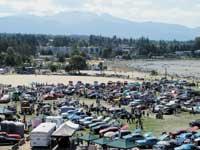
For example, many times they are used as a car pass or as a car park and, in addition to clearing sand, the plants are damaged. In addition, in some beaches it has been customary to cut plants that for many years “bothered” to the sun. Mechanical beach cleaning systems can also damage the dunes.
In this way, the loose sand and the dead plants or on the brink of death, make the dunes attenuated to the attacks of the sea and the wind.
On the other hand, the work of protection and stabilization of the coast also affects the dynamics dunar, and the constructions that are carried out in the back of the dune also affect the natural evolution of the dune by interrupting the natural processes of expansion and migration. In some areas, in addition, they have been built on the sandals themselves and have completely deteriorated the system.
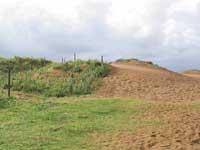
In addition to the direct damage caused by the use of the beach, we must not forget the influence of stress on living beings of this ecosystem, as well as the pollution of water and the atmosphere.
The dunes of our coast have not escaped from these problems. They can be found on several beaches from the western end to the eastern end, but their state varies a lot from place to place.
Dunes of the Basque Country
On the beach of La Arena, for example, at the mouth of the Barbadun River, are the most structured mobile dunes in the Basque Country. However, the situation they live is worrying. The installation of Petronor, in addition to being on the beach itself, has on itself the motorway, and the pressure that means being the only beach on the left bank of the Ibaizabal is enormous.
At the eastern end, the dunes of Angelu have also had problems. There, the conditions of development of the dunes are the best of the Basque coast. However, they suffer a strong pressure, putting in danger the architectural limits and the projects of leisure and development. The channeling of the Aturri River has also seriously affected the natural dynamics of the dunes.
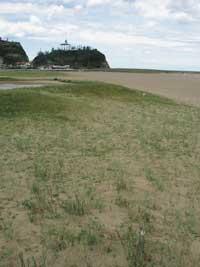
Among them are Gorliz, Urdaibai, Zumaia, Zarautz, Hendaia, Bidarte, Biarritz… But some of Gorliz, Hendaia and Biarritz are no longer active. In other places, those who were at the mouth of Urumea and Ibaizabal, among others, have completely disappeared.
Given the importance of these systems, most of the dunes of the Basque Country enjoy some protection today, but this effort is not equally successful everywhere.
Recovery Efforts
With the aim of recovering these spaces, various initiatives have been developed. Among them are those made in Urdaibai and Zarautz.
On the Laida beach of the Urdaibai Biosphere Reserve, the dunes have long since disappeared by human action. However, they have now been recovered as a result of the program developed by the Board of Trustees of the Reserve since 2001.
The implementation of new dunes forced the adequate substrate to be demolished on the beach, coming from a draga in the estuary itself. The appropriate area was selected and the material was extended to reduce the erosion caused by the tide current. Three wicker rows of 250 meters in length and 25 meters in width were placed so that the grains of sand were collected around them.
The sand and the wind did the following work. When the sand began to accumulate, the Ammophila arenaria, pioneer, was planted, after which other plants were installed to complete the vegetation of the dunes. The same process was carried out in 2003.
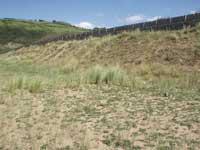
In Zarautz, for its part, the protection of the dunes began years ago. The installation of barriers and platforms and the realization of vegetation works have put in place a new plan of recovery of dunes. The objective is to stabilize the residual hills for the natural development of the beach. To do this, they will incorporate 60,000 plants and use protection techniques against the erosion of the sea and the wind.
Although they have begun to work in many places, consciousness and will are fundamental to generalize dune recovery initiatives, but the current trend seems complicated.
More risks for the dunes
On the coasts of the whole world there are giant dunes that of Euskal Herria. Going from Lapurdi to the north, for example, the Dune de Pyla de Arcachon, the largest in Europe. Next to the dunes of little meter of our coast, they seem spectacular their lengths of 2,5 kilometers and their heights of 100 meters, but they are also greater.

However, the big ones also have problems and, in addition to the usual damages, the new recreational uses have brought greater problems to some of them. In fact, lately, the habit of going up and down the dunes with different types of engines has extended a lot. In addition, the sport called sandboard is increasingly practiced. In this sport, athletes slide down the top of the dunes on a board.
The impact of this type of actions on dune ecosystems has generated a concern among the institutions that work on the protection of these spaces.
Buletina
Bidali zure helbide elektronikoa eta jaso asteroko buletina zure sarrera-ontzian











